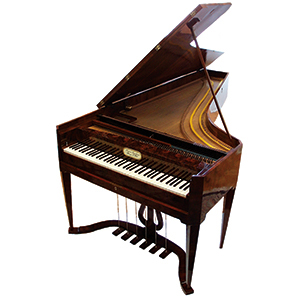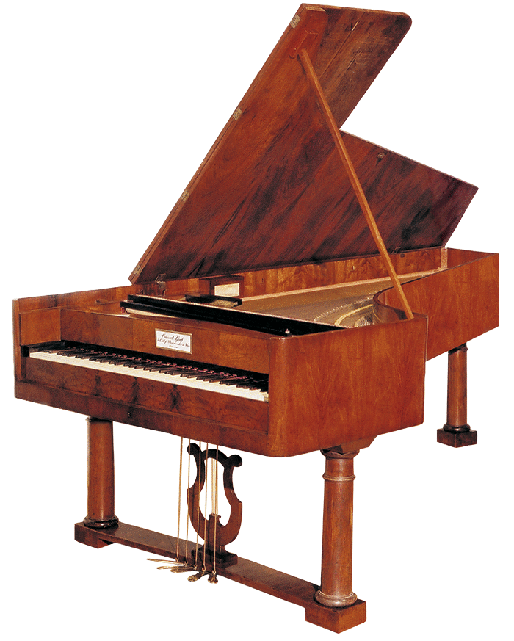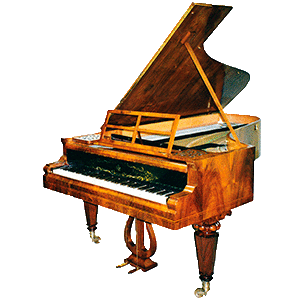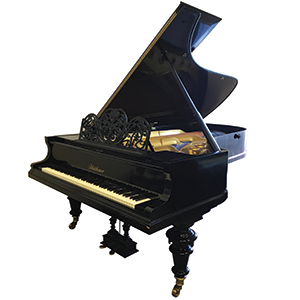1890 BlÜthner
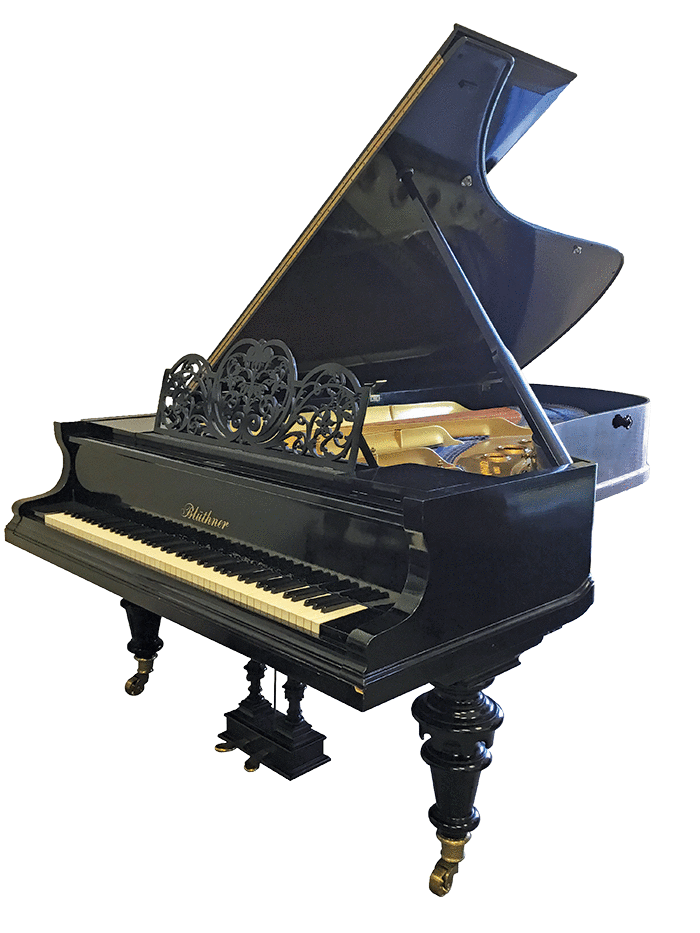
Julius Blüthner (1824–1910) founded his workshop in Leipzig, Germany, in 1853. This 1890 instrument is essentially a ‘modern’ piano in construction, with a cast-iron frame, heavy stringing, large felt-covered hammers, a complex mechanical action descended from the ‘English’ action of earlier pianos, and it has 7½ octaves, with 88 keys. Blüthner however introduced several particular innovations: ‘Aliquot’ stringing (an extra string for each treble key that is tuned an octave higher and resonates sympathetically), a very large soundboard (the piano is several inches wider than a Steinway grand), as well as uniquely designed hammers and dampers. As a result, the piano has a special palette of colors, with more variety of timbre throughout the registers: a luminous treble, a distinctive horn-like quality in the middle range, and a rich but transparent bass. The piano can be immensely powerful, or can produce sounds of airy delicacy. These qualities were especially valued by French musicians—Debussy was very proud of his beloved Blüthner!
In 1936, the Blüthner Company was chosen to build a piano for the airship Hindenburg. The piano was made with an aluminum frame to reduce weight. It was the first piano ever used in flight, and was broadcast on radio from the air. The piano was later removed to save weight—luckily avoiding the Hindenburg’s crash—and was moved to the Leipzig factory. Unfortunately, the factory was destroyed by bombing in 1942. The company is still in business in Leipzig, is privately owned, and is run by Julius’ descendants.

